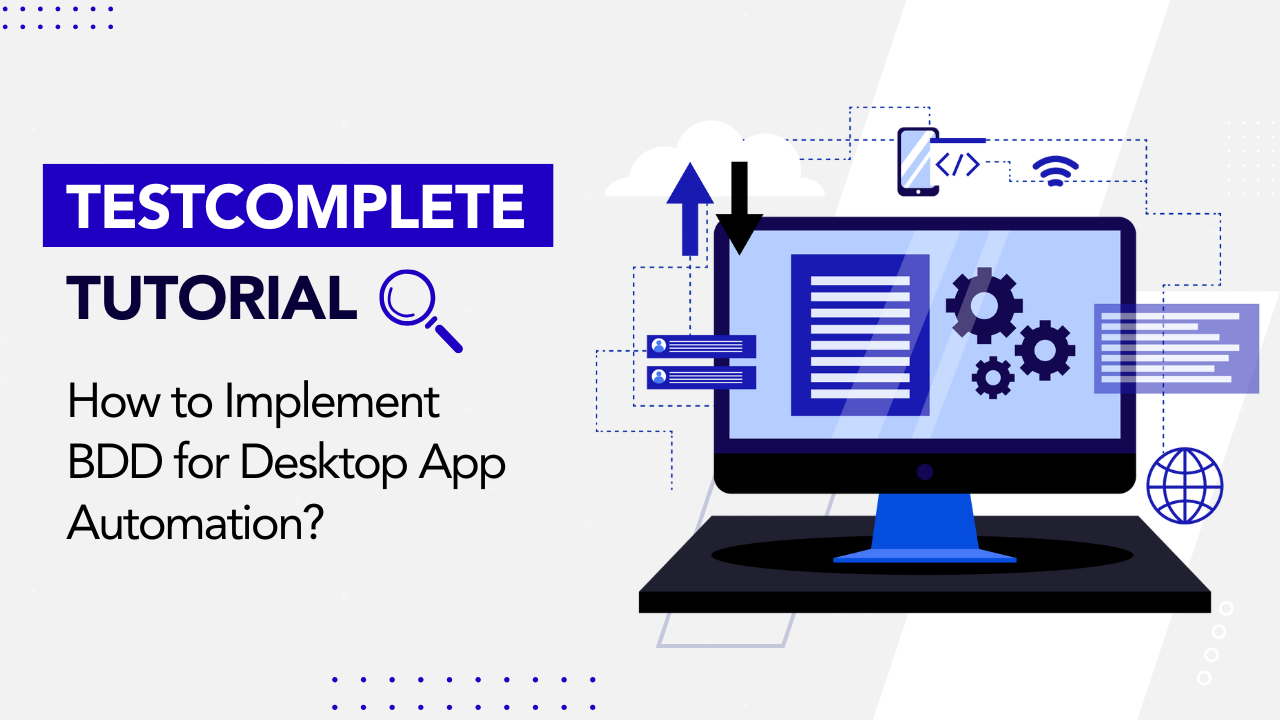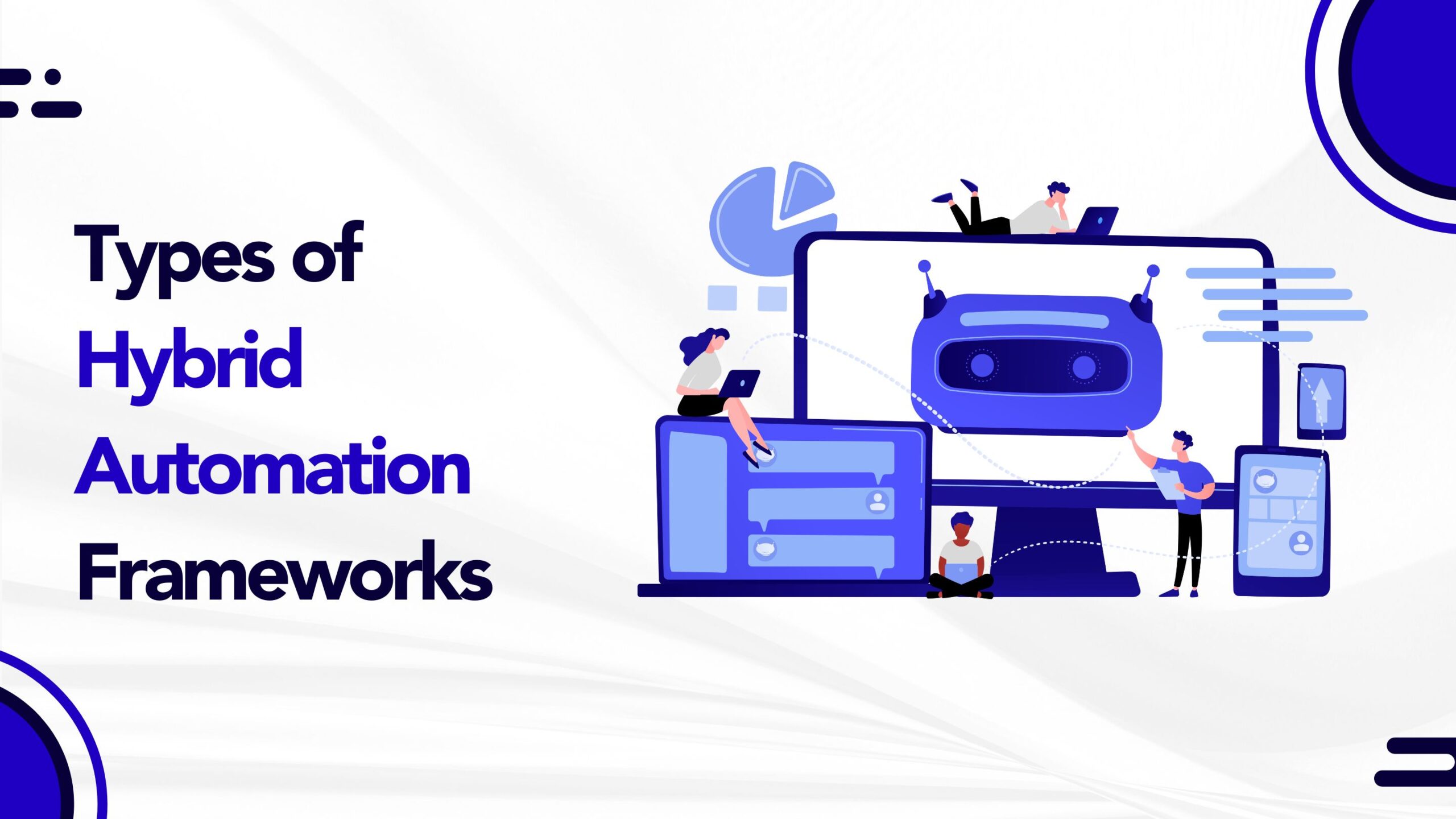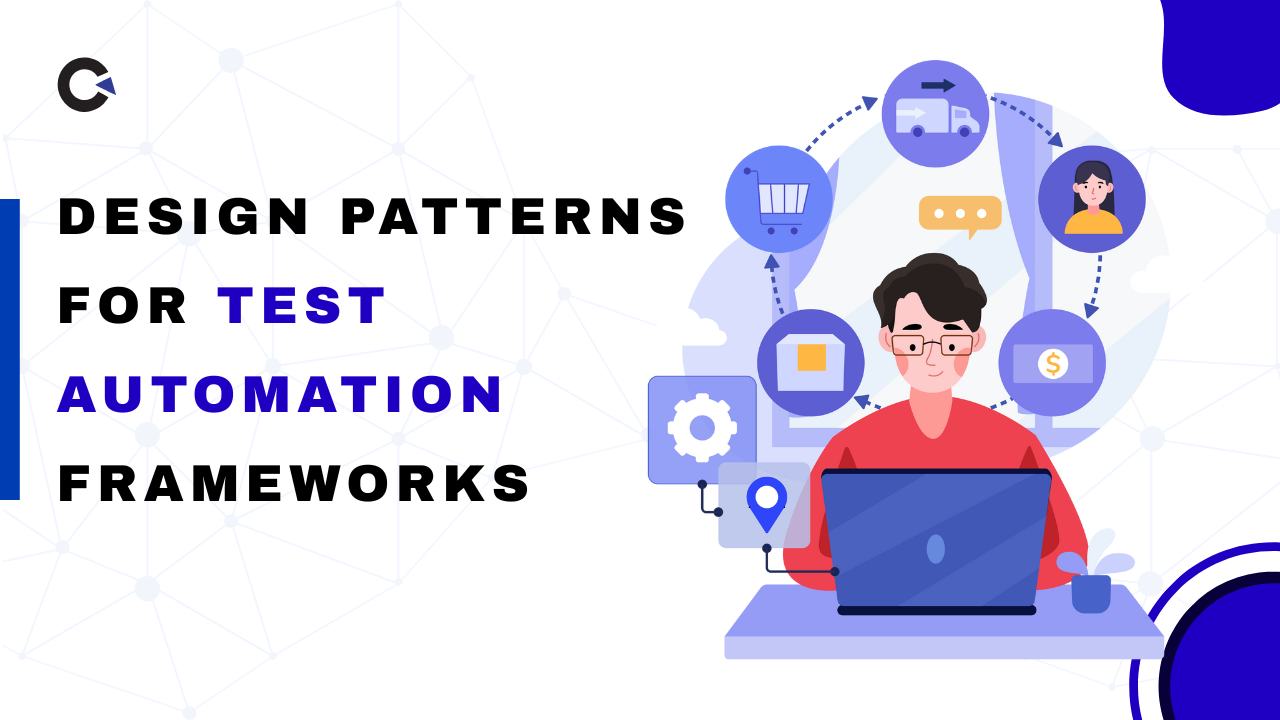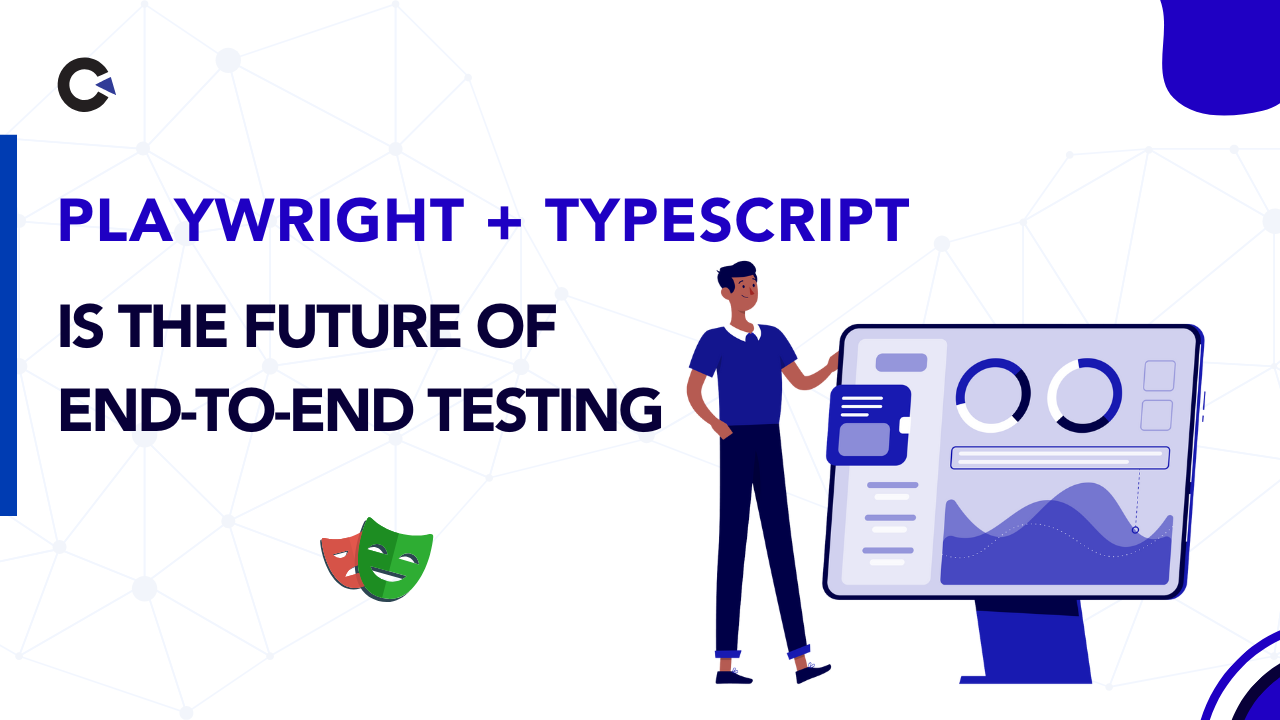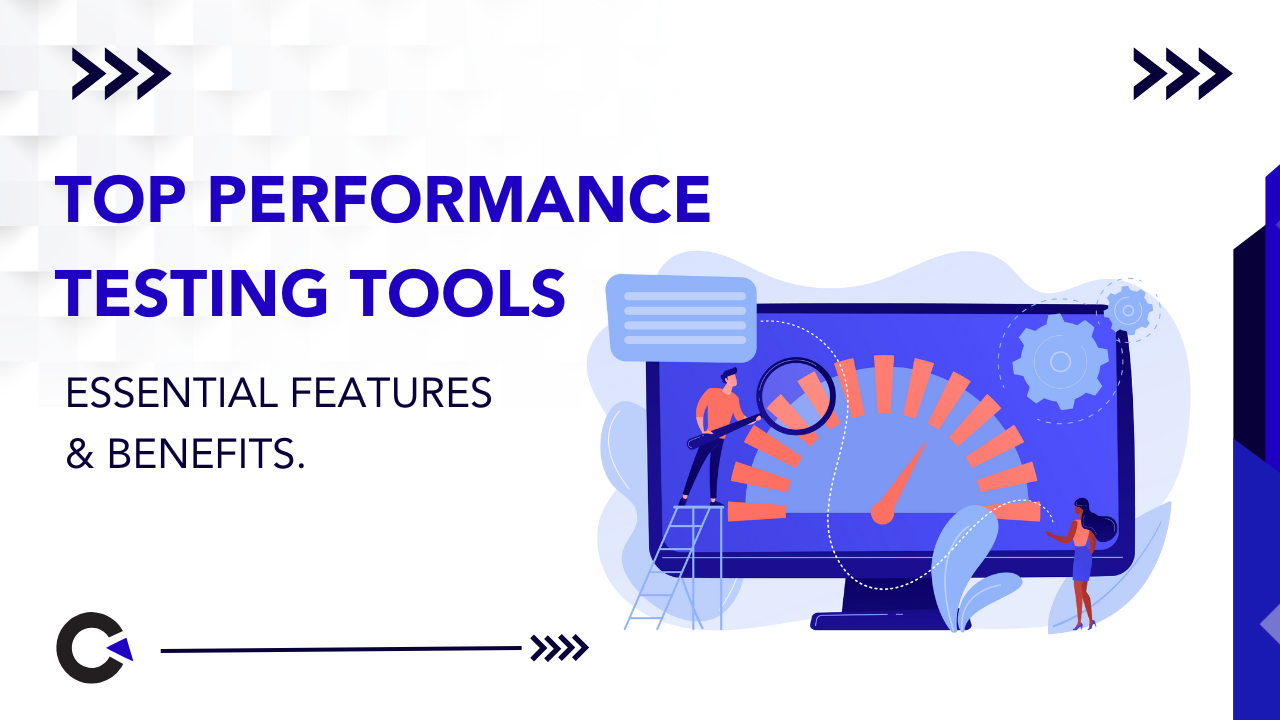
by admin | Aug 17, 2019 | Automation Testing, Fixed, Blog |
After automated regression test suite execution, troubleshooting failures is an important post execution task. However, it needs more error details to make sure whether the failure is test data issue or script issue or an actual application bug. Default Cucumber reporting does not provide step definition information. If you want to add the failed step definition information in Cucumber HTML Report, you can use Scott Test Reporter.
How to install? Add the below plugin and dependency in POM.xml
<build>
<plugins>
<plugin>
<groupId>hu.advancedweb<groupId>
<artifactId>scott-maven-plugin<artifactId>
<version>3.5.0<version>
<executions>
<execution>
<goals>
<goal>prepare-agent<goal>
<goals>
<execution>
<executions>
<plugin>
<plugins>
<build>
<dependency>
<groupId>hu.advancedweb<groupId>
<artifactId>scott<artifactId>
<version>3.5.0<version>
<scope>test<scope>
<dependency>
Cukes Test
package cukes;
import cucumber.api.CucumberOptions;
import cucumber.api.testng.AbstractTestNGCucumberTests;
@CucumberOptions(features = "src/test/resources/Sample.feature", monochrome = true, plugin = {
"pretty", "hu.advancedweb.scott.runtime.ScottCucumberHTMLFormatter:target/cucumber",
"hu.advancedweb.scott.runtime.ScottCucumberJSONFormatter:target/cucumber.json"},
glue = {"step_definitions"})
public class Runner1 extends AbstractTestNGCucumberTests {
}
Report
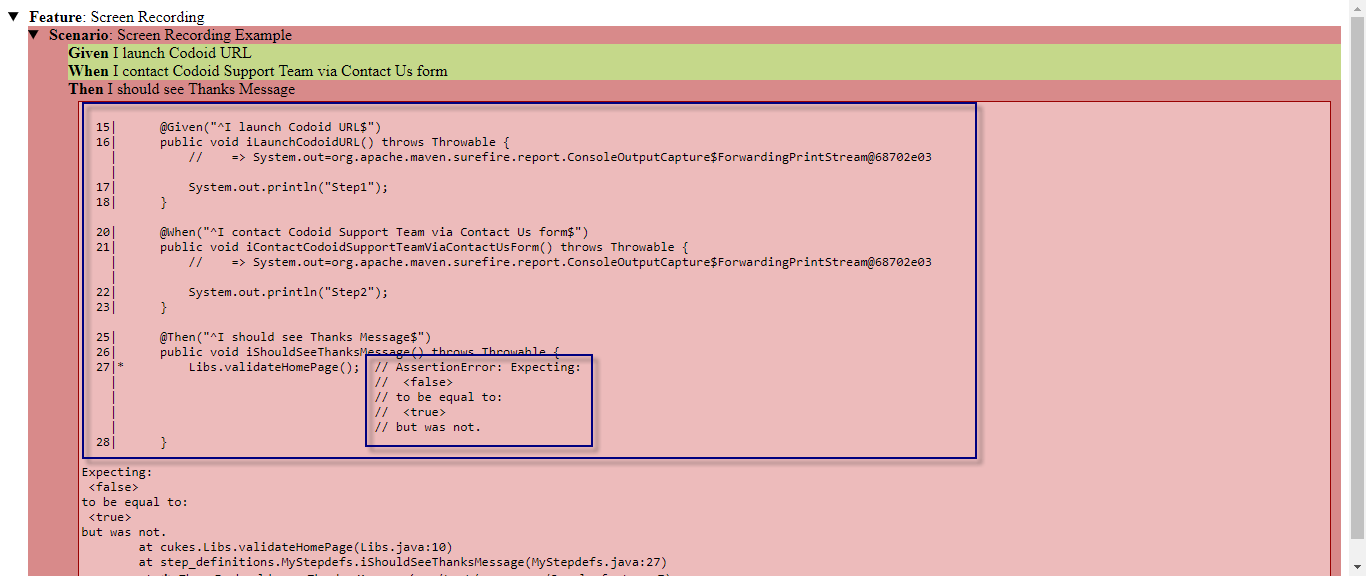
In Conclusion:
Using this library, you can troubleshoot failures without revisiting or executing your code again. To provide quick feedback after test automation execution, you need to troubleshoot the failures quickly.

by admin | Aug 31, 2019 | Automation Testing, Fixed, Blog |
Nowadays, we have umpteen number of testing frameworks developed using Python and most of them don’t fit everyone’s requirement, through extensive research we have a found a testing framework which is comprehensive and has all the required features to maintain your automated test cases. It is Test Junkie which is still in the Alpha stage. This framework was developed by Artur Spirin . In this blog article, we will see what are all the distinct features of Test Junkie.
ListenersIn Cucumber, we use hooks like beforeScenario & afterScenario. Similarly, in Test Junkie, we have many listeners for Test and Suite.
Test Listeners: on_in_progress, on_success, on_failure, on_error, on_ignore, on_cancel, on_skip, & on_complete.
Suite Listeners: on_class_in_progress, on_before_class_failure, on_before_class_error, on_after_class_failure, on_after_class_error, on_class_skip, on_class_cancel, on_class_ignore, on_class_complete, on_before_group_failure, on_before_group_error, on_after_group_failure, & on_after_group_error.
from test_junkie.listener import Listener
class MyTestListener(Listener):
def __init__(self, **kwargs):
Listener.__init__(self, **kwargs)
...
Test ReportingIn Test Junkie, you can report the test execution in HTML, XML, and JSON. Using monitor_resources parameter, you can enable monitoring of the MEM & CPU usage during test execution. Test Junkie generates a beautiful HTML report as shown below.

Advanced Test Suite Example
from test_junkie.decorators import Suite, test, afterTest, beforeTest, beforeClass, afterClass
from test_junkie.meta import meta, Meta
@Suite(parameters=[{"login": "[email protected]", "password": "example", "admin": True},
{"login": "[email protected]", "password": "example", "admin": False}])
class LoginSuite:
@beforeClass()
def before_class(self, suite_parameter): # yes, we just parameterized this function, seen that anywhere else?
# Lets assume we have some code here to login with
# username . . . suite_parameter["login"]
# password . . . suite_parameter["password"]
# This is our, hypothetical, pre-requirement before we run the tests
# If this step were to fail, the tests would have been ignored
pass
@afterClass()
def after_class(self):
# Here, generally, we would have clean up logic.
# For the sake of this example, lets assume we logout
# from the account that we logged into during @beforeClass()
# no `suite_parameter` in method signature,
# logout process would likely be the same irrespective of the account
pass
@test(parameters=["page_url_1", "page_url_2", "page_url_3"])
def validate_user_login_in_header(self, parameter, suite_parameter):
# Lets assume that in this test case we are going to be validating
# the header. We need to make sure that email that user logged in with
# is displayed on every page so we will make this test parameterized.
# By doing so we will know exactly which pages pass/fail without
# writing any extra logic in the test itself to log all the failures
# and complete testing all the pages which would be required if you
# were to use a loop inside the test case for instance.
# Now we would use something like Webdriver to open the parameter in order to land on the page
# and assert that suite_parameter["username"] in the expected place
pass
@test(parameters=["admin_page_url_1", "admin_page_url_2"])
def validate_access_rights(self, parameter, suite_parameter):
# Similar to the above test case, but instead we are validating
# access right privileges for different user groups.
# Using same principal with the parameterized test approach.
# Now we would also use Webdriver to open the parameter in order to land on the page
# and assert that the page is accessible if suite_parameter["admin"] is True
@Suite(pr=[LoginSuite],
parameters=[{"login": "[email protected]", "password": "example", "user_id": 1},
{"login": "[email protected]", "password": "example", "user_id": 2}])
class EditAccountCredentialsSuite:
"""
It is risky to run this suite with the LoginSuite above because if
the suites happen to run in parallel and credentials get updated
it can cause the LoginSuite to fail during the login process.
Therefore, we are going to restrict this suite using the `pr` property, this will insure that
LoginSuite and EditAccountCredentialsSuite will never run in parallel thus removing any risk
when you run Test Junkie in multi-threaded mode.
"""
@test(priority=1, retry=2) # this test, in case of failure, will be retried twice
def reset_password(self, suite_parameter): # this test is now parameterised with parameters from the suite
# Lets assume in this test we will be resetting password of the
# username . . . suite_parameter["login"]
# and then validate that the hash value gets updated in the database
# We will need to know login when submitting the passowrd reset request, thus we need to make sure that
# we don't run this test in parallel with edit_login() test bellow.
# We will use decorator properties to prioritize this test over anything else in this suite
# which means it will get kicked off first and then we will disable parallelized mode for the
# edit_login() test so it will have to wait for this test to finish.
pass
@test(parallelized=False, meta=meta(expected="Able to change account login"))
def edit_login(self, suite_parameter):
# Lets assume in this test we will be changing login for . . . suite_parameter["login"]
# with the current number of tests and settings, this test will run last
Meta.update(self, suite_parameter=suite_parameter, name="Edit Login: {}".format(suite_parameter["login"]))
# Making this call, gives you option to update meta from within the test case
# make sure, when making this call, you did not override suite_parameter with a different value
# or update any of its content
@afterClass()
def after_class(self, suite_parameter):
# Will reset everything back to default values for the
# user . . . suite_parameter["user_id"]
# and we know the original value based on suite_parameter["login"]
# This will insure other suites that are using same credentials, wont be at risk
pass
@Suite(listener=MyTestListener, # This will assign a dedicated listener that you created
retry=2, # Suite will run up to 2 times but only for tests that did not pass
owner="Chuck Norris", # defined the owner of this suite, has effects on the reporting
feature="Analytics", # defines a feature that is being tested by the tests in this suite,
# has effects on the reporting and can be used by the Runner
# to run regression only for this feature
meta=meta(name="Example", # sets meta, most usable for custom reporting, accessible in MyTestListener
known_failures_ticket_ids=[1, 2, 3])) # can use to reference bug tickets for instance in your reporting
class ExampleTestSuite:
@beforeTest()
def before_test(self):
pass
@afterTest()
def after_test(self):
pass
@test(component="Datatable", # defines the component that this test is validating,
# has effects on the reporting and can be used by the Runner
# to run regression only for this component
tags=["table", "critical", "ui"], # defines tags that this test is validating,
# has effects on the reporting and can be used by the Runner
# to run regression only for specific tags
)
def something_to_test1(self, parameter):
pass
@test(skip_before_test=True, # if you don't want to run before_test for s specific test in the suite, no problem
skip_after_test=True) # also no problem, you are welcome!
def something_to_test2(self):
pass
Command Line InterfaceTest Junkie comes with three features in Command Line execution. First one is run command which allows to execute your tests. The second one is audit command which to quickly scan existing codebase and aggregate test data based on the audit query. The last one is config command is to let you easily persist test configuration for later use with other commands like run & audit
In Conclusion:
Reviewing a testing framework helps the test automation community to understand the framework features quickly. We, at Codoid, urge our testers to explore latest tools/frameworks to improve our automation testing services. Test Junkie is still Alpha phase. Once it is released, it will be the most popular Python testing framework.

by admin | Aug 30, 2019 | Automation Testing, Fixed, Blog |
Automated software testing schedules have the ability to increase the depth and expand the scope of software testing while elevating the quality of software applications and packages. Today, test automation frameworks are deployed to execute thousands of different complex test cases during every test run, thus providing expansive testing coverage, which would be impossible with manual testing. For instance, certain automated testing tools can playback pre-recorded and predefined actions, compare the results to the expected behavior of a software package, and report the success or failure of these manual tests to the software testing experts. Automation also boosts the repeatability of tests, which can be extended to perform tasks impossible with manual testing. These facts help leading software testing companies to promote automated software testing as an essential component of successful software development projects, while also measuring its success across a range of projects.
Test Management Tools
Testing engineers offering automation testing services should identify ‘candidates’ for automation during the process of defining test cases and testing scenarios. The salient features of a test management tool are flexibility and ease of use. Further, a good quality tool should be able to help testers identify any bugs in the project. Additionally, a test management tool should have the ability to execute various automation tests and scripts in batches or position these in the testing pipeline for scheduled testing or on-demand.

What to Automate
An intelligent automated testing strategy should be able to answer the questions: ‘where to automate’ and ‘what to automate’. Testing engineers must answer these queries to denote the layer of an application that must undergo automated testing. However, testing engineers offering automation testing services must bear in mind that although automated testing requires higher initial investment, it can yield a significantly higher return on investment. Therefore, teams of software testing experts should have answers to the questions mentioned to enable a better focus on their automation efforts.
Tool Selection
The correct automation tool is critical to ensure the success of automation testing. Hence, test engineers must, for instance, work to determine which tool could enable the automated testing of a desktop application. Further, factors such as language support, tool support, the availability of newer versions of a tool, support for API automation, and more, must be considered during the tool selection process. These factors can and should influence commercial decisions to purchase tools for firms that offer test automation services. Certain complexities may arise when a company engaged in automation testing services negotiates the process of tool selection in specific circumstances.
Environment Stability
Test automation thrives in stable testing environments. Hence, test engineers performing test automation services must consider factors such as dependency, availability and the up-time of a test environment. Testers should take a special interest in managing test infrastructure – such as hardware servers, application servers, networking, firewalls, software components required for testing, build software required for testing releases and more. Further, they must manage test environments such as database clusters, UAT, Pre-production, and the data required for testing. Additionally, testers must remain aware that test environments differ from production environments in several ways – these include operating systems, configuration, software versions, patches, and others. Therefore, the wider the gap between test and production environments, the greater the probability the delivered product will feature a range of bugs and defects.
Data Usage
Data and its appropriate usage are critical to devising a correct approach to automation. The complications associated with data bring up several unexpected challenges in automation testing. Therefore, testing engineers must find the means to randomly generate or obtain varied data input combinations as part of reinforcing their efforts towards test automation. For instance, data can be sourced from tables, files or APIs. Further, engineers must make qualitative judgments such as whether sourcing a certain type of data would affect the performance of scripts, and others.
In Conclusion
A well-calibrated and prudent approach to testing automation can elevate the quality of testing in software testing scenarios. Testers with the ability to put together a unique approach to test automation would be more successful in their chosen domain of work. Companies must partner with a leading software testing company to get the best service, experts, and top testing tools. Connect with us for all these features and more.

by admin | Aug 2, 2019 | Automation Testing, Fixed, Blog |
The norms of evolution in technology emphasize a shift from the manual to the automated. Software testing services are no exception and hence automation testing services are gaining ground within the industry. This shift is largely powered by a well-grounded view that test automation services help unearth a larger number of glitches in software applications and products. The very essence of automation has enabled it to emerge as a more reliable testing method, which the industry seems more than willing to emulate.
Is Automation Testing Necessary?
The answer is an emphatic yes and since automation testing represents the future of software testing processes and services. Intelligently framed testing scripts that would create accurate and repeatable automated tests across multiple mobile devices, platforms, and environments will most likely dominate the software testing industry in the years to come.

Effortless and Efficient Testing
Expert testers vouch for the efficacy of test automation services, saying that it offers seamless execution of software testing systems and principles. This approach, however, must be complemented by the clarity of the objective of the testing regime and the ability of software testing engineers to manage the rigors of such a testing method. The testers should be able to determine the purpose of a test script and only then consider automating to affect speedier and more efficient testing. Such practices drive a transition from manual testing systems to automation-driven regimes in the long term.
Storable, Customizable, and Reusable Scripts
Software testing systems evolved from manual practices to automated testing, being driven by the efforts and intelligence of human testers. Transitioning from a manual regime to automation testing services requires a graded and calibrated approach. It is possible to attain a middle ground when testers automate certain tests, which makes their execution more efficient. Benefits accrue since automated testing tools have the ability to playback pre-recorded and predefined actions, compare results with expected outcomes, and report the actual outcomes to the testing team. It is possible to repeat and extend automated tests to perform tasks, which would not be possible with manual testing.
Evaluating Tests
Testing managers understand the critical nature of automated software testing as an essential component of successful development projects. However, the existence and rationale of a test script must undergo interrogation before implementing it into an automated regime. A test scenario should merit testing in different ways to ensure the satisfactory coverage of a given set-up. The evaluation process must include queries designed to satisfy the curiosity of the tester regarding likely outcomes. It is important to ensure that the efforts focus on reviewing, refining, and tightening the repository of test scripts to retain a high degree of relevance.
Regular and Rigorous Evaluation
Test suites need regular evaluation by the creators of test automation services. Being able to extract significant value from the information created by executing various tests is necessary for the success of the project. This is a marked departure from mechanistic testing regimes dominated by legacy testing scripts. Therefore, providers of automation testing should invest time and effort to frame automated tests that conform to client requirements and can add value to the process of modern software development.
In Conclusion
Automated software testing regimens offer distinctive benefits by way of faster feedback, reduced business expenses, accelerated results, higher levels of testing efficiency, comprehensive test coverage, the early detection of defects, and thoroughness in testing outcomes. However, the transition from manual to automation testing services must have clear lines of thought and inquiry and must be complemented by a robust assessment of the benefits afforded by each script. Connect with us to leverage on our experience and expertise in the realm of automation testing services, and a much more.

by admin | Aug 1, 2019 | Automation Testing, Fixed, Blog |
Assertpy is a simple assertion library in python with a nice fluent API. All automation testing validations should be asserted. In Java, we use AssertJ to compare actual and expected result. However, Assertpy is a suitable package to write readable assertions with method chaining concept. Implementing BDD step definitions using Assertpy enables effective collaboration between testers and other stakeholders. Writing chaining method calls for assertion helps automation testers to understand the existing test scripts during maintenance.

Installation
Matching strings
assert_that('').is_not_none()
assert_that('').is_empty()
assert_that('').is_false()
assert_that('').is_type_of(str)
assert_that('').is_instance_of(str)
assert_that('foo').is_length(3)
assert_that('foo').is_not_empty()
assert_that('foo').is_true()
assert_that('foo').is_alpha()
assert_that('123').is_digit()
assert_that('foo').is_lower()
assert_that('FOO').is_upper()
assert_that('foo').is_iterable()
assert_that('foo').is_equal_to('foo')
assert_that('foo').is_not_equal_to('bar')
assert_that('foo').is_equal_to_ignoring_case('FOO')
assert_that(u'foo').is_unicode() # on python 2
assert_that('foo').is_unicode() # on python 3
assert_that('foo').contains('f')
assert_that('foo').contains('f','oo')
assert_that('foo').contains_ignoring_case('F','oO')
assert_that('foo').does_not_contain('x')
assert_that('foo').contains_only('f','o')
assert_that('foo').contains_sequence('o','o')
assert_that('foo').contains_duplicates()
assert_that('fox').does_not_contain_duplicates()
assert_that('foo').is_in('foo','bar','baz')
assert_that('foo').is_not_in('boo','bar','baz')
assert_that('foo').is_subset_of('abcdefghijklmnopqrstuvwxyz')
assert_that('foo').starts_with('f')
assert_that('foo').ends_with('oo')
assert_that('foo').matches(r'w')
assert_that('123-456-7890').matches(r'd{3}-d{3}-d{4}')
assert_that('foo').does_not_match(r'd+')
Matching Integers
assert_that(0).is_not_none()
assert_that(0).is_false()
assert_that(0).is_type_of(int)
assert_that(0).is_instance_of(int)
assert_that(0).is_zero()
assert_that(1).is_not_zero()
assert_that(1).is_positive()
assert_that(-1).is_negative()
assert_that(123).is_equal_to(123)
assert_that(123).is_not_equal_to(456)
assert_that(123).is_greater_than(100)
assert_that(123).is_greater_than_or_equal_to(123)
assert_that(123).is_less_than(200)
assert_that(123).is_less_than_or_equal_to(200)
assert_that(123).is_between(100, 200)
assert_that(123).is_close_to(100, 25)
assert_that(1).is_in(0,1,2,3)
assert_that(1).is_not_in(-1,-2,-3)
In Conclusion:
Assertpy development is still active. There are more assertions packages available in Python, we will review in the subsequent blog articles.

by admin | Aug 16, 2019 | Automation Testing, Fixed, Blog |
In this blog article, you will get to know how to write automated tests using lemoncheesecake framework & Selenium WebDriver. lemoncheesecake is a python framework for functional testing. It has good reporting system, fixtures and matchers to create readable automated test scripts using Python. As a test automation company, we would like to show an example for lemoncheesecake framework using Selenium snippets.

How to install?
pip install lemoncheesecake
Create Default Project Once you execute the below, it will create a project (myproject) which contains fixtures folder, suites folder, & project.py file.
Create Test Suite Create a python file inside the suites folder with the below snippets. The code will launch Codoid website and verify the home page title using check_that method.
from selenium import webdriver
import time
import lemoncheesecake.api as lcc
from lemoncheesecake.matching import *
URL = "https://codoid.com"
SUITE = {
"description": "My suite"
}
@lcc.test("Test 1")
def my_test():
lcc.set_step("Launch URL")
lcc.log_info("URL %s" % URL)
driver = webdriver.Chrome(executable_path='driverschromedriver.exe')
driver.get(URL)
time.sleep(3)
lcc.set_step("Verify page title")
check_that("value",driver.title,starts_with("One of the best QA Companies"))
lcc.log_info("Page Tile: %s" % driver.title)
driver.quit()
Run The Test Suite Go to the suites folder and run the below command, it will run the test suite.
View Test Result You can see the html test result under reports folder.
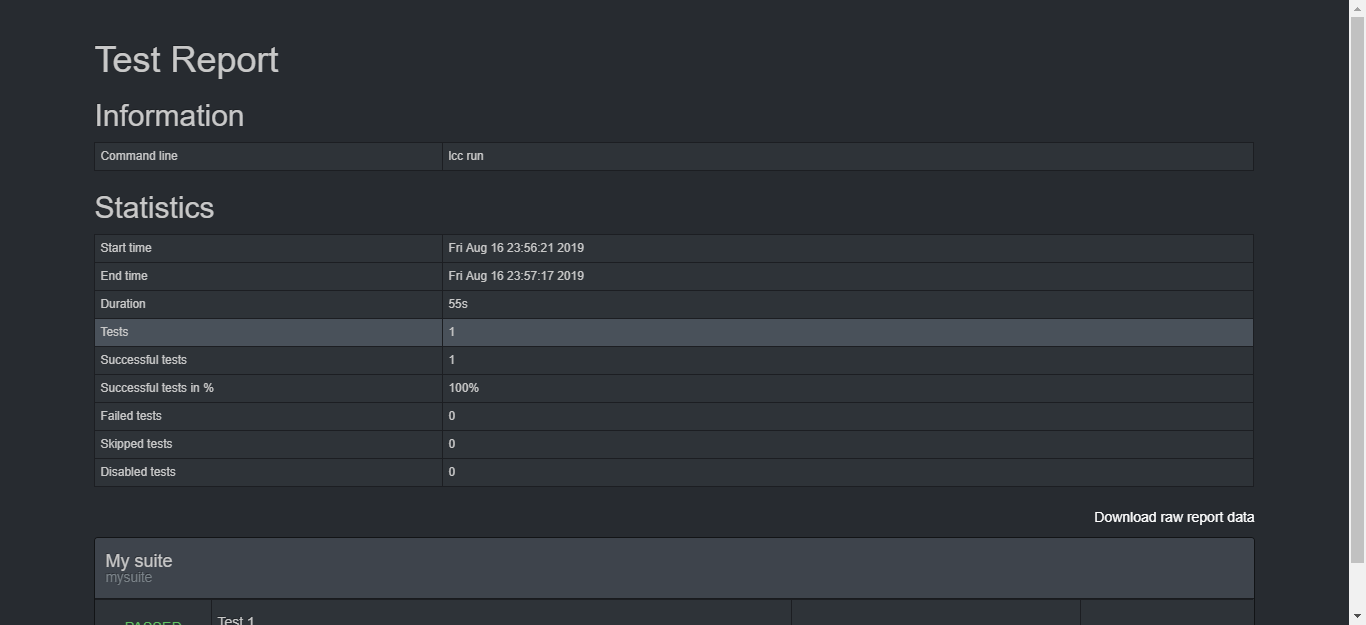
In Conclusion:
In lemoncheesecake framework, you can send the automated reports to Slack & Report Portal as well. Executing scripts in parallel is also possible.





